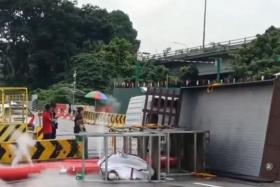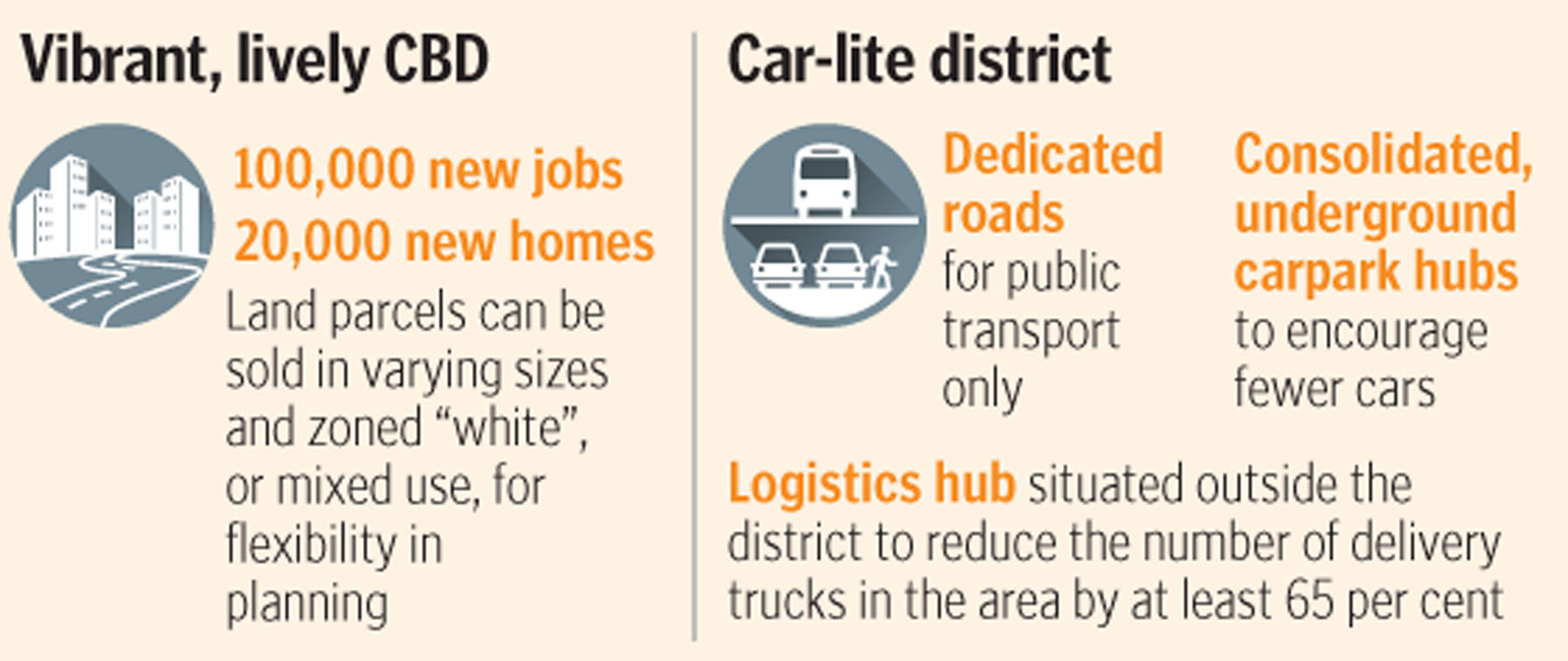Jurong Lake District to be car-lite town of the future
Second CBD to provide 100,000 jobs and 20,000 new homes amid 100ha of greenery and open spaces
Roads prioritised for public transport, fewer delivery trucks on roads during peak hours, and wide spaces set aside for bicycles and personal mobility devices.
This is the car-lite vision for the 360ha Jurong Lake District painted by Minister for National Development Lawrence Wong at the launch of its master plan exhibition on Friday.
The target is for more than 80 per cent of all trips to and from the district to be made with public transport, he said.
This is an increase from the current national public transport mode share of 66 per cent.
Mr Wong added: "Eighty per cent is truly a stretched target. It is an aspiration, but we hope with all these plans, we can achieve this."
Other public transport-friendly initiatives include having every development near a bus stop or an MRT station.
The network will also be improved, with seamless linkages across different nodes.
For example, there will be connections between the High-Speed Rail (HSR) terminus and MRT stations in the district, such as the existing North-South and East-West lines, as well as the upcoming Jurong Regional and Cross Island lines.
Consolidation is another way that will lead to a "change in the paradigm of mobility".
The Urban Redevelopment Authority will build at least four consolidated underground carparks located not more than 400m from every development.
It also plans to develop off-site logistic centres so that companies can consolidate their goods deliveries before entering the district.
This could reduce the volume of freight vehicles on the roads by at least 65 per cent.
Jurong Lake District, designated as the second Central Business District, will provide 100,000 jobs, Mr Wong said.
The "district of gardens and water" will also be a place to live, with 20,000 new homes and attractive recreational and leisure options nearby, he added.
With 16ha of new parks and open spaces, there will be over 100ha of extensive greenery and open spaces in the district.
"Even the space above the HSR terminus will be designed as a central linear park leading to the waterfront," he said.
Energy-friendly infrastructure innovations include: a common services tunnel to house water pipes; telecommunications and power cables to minimise road disruptions; a pneumatic waste collection system to reduce vehicle movements; and a cooling system to pipe cool air directly to homes to save energy.
The plans for Jurong Lake District, which will take 15 to 20 years to develop, were generally well-received by residents and transport experts.
Safe Cycling Task Force president Steven Lim thinks that apart from building the right infrastructure, it is important for pedestrians, motorists and cyclists to cooperate.
He added: "Ultimately, it is about getting everyone to share the roads graciously."
Associate Professor Michael Li, transport economist at Nanyang Technological University, thinks the car-lite vision can be achieved as the public transport network will have been improved by then.
"By locating carparks further and making the first and last mile of the public transport commute enjoyable, more people will be encouraged to take public transport.
"At the same time, the Government should also take note of the needs of the handicapped and ageing population, and ensure barrier-free access."
Jurong resident C. H. Chin, 27, expects to have a healthier lifestyle in future.
"I look forward to a better living environment that is greener and cleaner. I will probably run in the area more often."
Get The New Paper on your phone with the free TNP app. Download from the Apple App Store or Google Play Store now



